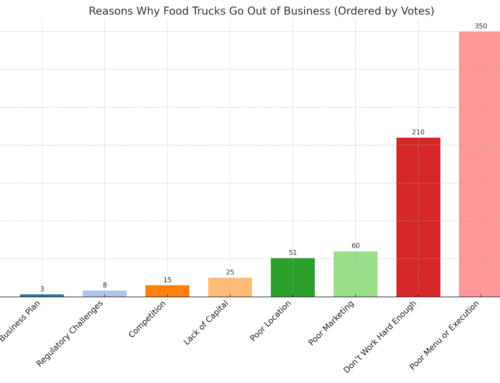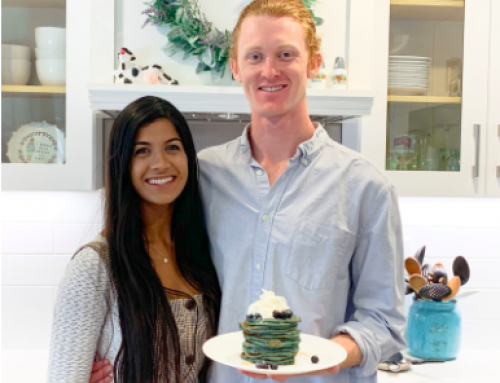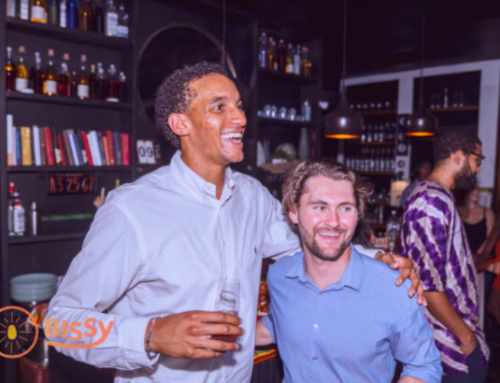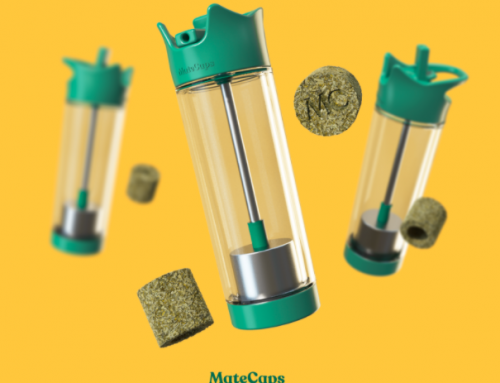Hello! Who are you and what beverage business did you start?
Hi! My name is Sisun, and I’m in the business of functional beverages.
My background is in tech, having worked as a product manager at Facebook, Uber, and Tesla prior to jumping into food business two years ago. Today, I am a co-founder and CEO of More Labs, a venture-backed CPG startup building science-backed, functional beverages. Our goal is to boost productivity; help people feel their best to do more of what they love.
Our flagship product is Morning Recovery. Think of Morning Recovery as your liver’s wingman designed to help you feel better after a night of drinking. Our customer spectrum is broad, but generally fall between 20s – 40s, working professionals, many are married/have children.
Today, our business does over $10M in ARR. We sell through both online and offline channels.
What are your ballpark monthly or annual revenue numbers?
We are two years old, and the business is changing rapidly. Today, our annualized run rate revenue exceeds $10M.
We started out mostly as an e-commerce brand, but half of our revenue comes from retail now. The retail portion of our business is growing fast.
How did you come up with the idea?
For full backstory, visit: https://blog.usejournal.com/how-we-made-1m-in-3-months-the-story-of-morning-recovery-86b7c8a64cd0.
Summary below:
My journey into the food business has been serendipitous. I never planned it, nor imagined myself here two years ago.
My backgrounds in tech (having worked in Silicon Valley at companies like Facebook, Uber, and Tesla) and Korean heritage (born and raised in South Korea before immigrating to Canada) definitely helped spark my journey into More Labs.
In 2016, I visited South Korea. It turned out Koreans drink the most amount of liquor per capita. I witnessed this first hand; they are the embodiment of work hard, play hard.
So how does an entire population cope with heavy drinking? It turned out ‘hangover drink’ was a massive industry there – similar to energy drinks in the States. Locals would recommend me their favorite brands. I would try them all, and felt the efficacy immediately. I was hooked.
Back in the States, I started dabbling into basic research, trying to answer questions like why wasn’t this popular here, and what is the science behind these drinks?
I read as many white papers as I could on hangover remedy, and came across a paper online conducted by Dr. Liang from USC where she analyzed the impact of a flavonoid called DHM, found inside Korean hangover drinks, that helps break down acetaldehyde (byproduct of toxin when you consume alcohol).
Out of curiosity, I emailed her questions, and a few weeks later, we decided to meet up for dinner. From there, we got into multiple passionate conversations about creating our own product as a side project.
At first, Dr. Liang would provide me with samples she cooked up in her lab, mostly of pure DHM powders, and later, differentiation combinations of ingredients. I spent time convincing my friends and co-workers to get drunk, and test out the samples. That’s how this journey got started. We partied in the name of science.
Take us through the process of developing and producing your first product.
I needed to confirm my hypothesis about demand for this product in the States. I first put together a landing page called thehangoverdrink.com and collected email leads. Is this a real problem for people? I ran Facebook ads to drive traffic. In a span of a week, I collected 200 emails. This was back in Jan 2017 when I was working full-time in tech. We didn’t have products made, but the game was on!
With the help of Dr. Liang, we came up with various formulas to test. Our decision was to package them into a soluble drink form. So we needed to find factories willing to make samples for us.
This is where Fiverr kicked in. I posted a $30 ad looking for people over the internet to help us find relevant factories. We focused on finding a factory in Korea given their market dominance; we assumed they would be familiar with what we were trying to accomplish.
I visited these factories, narrowed down to final candidates, and got them to build samples for us. Total cost, including my trip to Asia cost me about $3000. Not long after I returned, samples arrived.
This was March 2017. March was a blur as I was on a mission to get as much feedback as possible. I went on what felt like a never-ending spread of drinking adventures with friends. We received tremendous feedback on the efficacy, and the momentum behind our side project grew.
Soon, we updated our website, and launched it on ProductHunt. It was just what we needed – a concentrated and influential community of early adopters.
We drove traffic to our website where we were looking for more testers. In total, we gave out 1000+ samples to people in the States, mostly centered around Silicon Valley. They joined our internal Facebook group to give raw feedback. Word started to spread, and we had a small but engaged community behind us, encouraging us to launch our product widely. Total cost of shipping out samples, managing our website, etc came out to be roughly $5000.
Our final validation came in the form of a pre-order campaign. Given high MOQ that factories demanded (~$25,000), we wanted to validate that people were actually willing to pay for our product first. We launched an Indiegogo campaign in July, 2017, and reached $252K in pre-order sales.
Describe the process of launching the Morning Recovery.
The process of launching the business was straightforward. Before launch, we wanted to have conviction that the demand was real, and market opportunity was massive. We tested months by iterating on our samples, and getting feedback. We looked at our market size by investigating the size of the alcohol market, % of population that drink alcohol, competitive landscape, and noticed a big gap in recovery remedy. Ultimately, we validated product/market fit with our pre-order sales. People were willing to pay for this. By the time we launched, we felt pretty good about our product/market fit and market dynamics. We just had to execute right.
On a personal note – because we raised $252K in pre-orders, we didn’t need more money to kickstart our business. However, because I was Canadian, I needed a visa to stay in the States.
I raised $450K in VC capital to apply for the International Entrepreneur Rule, a visa given out to foreigners who receive 6-fig investment from US-institutionalized VCs. Funny enough, the Trump administration delayed the launch of this bill, and I was kicked out of the country for a few months.
I ended up operating out of Canada until I received a different visa called E2 to return. So technically, I didn’t have to raise $450K, but in hindsight, it was helpful as the business grew rapidly and we needed capital to keep up with the growth: hiring, ordering for inventory, shipping, legal fees, etc.
Since launch, what has worked to attract and retain customers?
Three things that we focused on that were valuable in growing our business:
- Prioritize Customer Retention Over Acquisition
The most important metric that we optimize for is retention. We deeply care about the share of new customers that return to buy again, and how often.
I think many DTC companies focus solely on customer acquisition, or the top of the funnel. While I do think it’s critical, it’s not sustainable without healthy retention. It’s harder to resurrect churned customers (those who used your product and left) than to acquire new customers who have yet to try your product.
Focus on the latter once your bucket is not too leaky. Strong retention means compound growth as it increases (1) word of mouth referrals, and (2) LTV of your new customers as they stick around.
Related Reading: Soulfull: Transforming Millet into a Contemporary Indian Consumer Brand
Acquisition is sexy for many, because you can immediately measure its impact on growth. With better ads, optimized marketing funnels, etc. – your immediate return on spend improves. Retention, on the other hand, takes time and is a truer measure of your value proposition. No funnel gimmicks will convince someone who decided not to use your product to use it again. It’s harder. But it’s critical. We like to think of acquisition as a measurement of our marketing ROI while thinking of retention as a measurement of our product ROI.
- Growth framework in tech applies to food (and all other products)
As a growth pm, my job boiled down to [A] understanding the goal (growth target), [B] building hypotheses, and [C] rapidly testing against them, and doubling down to execute against winning opportunities. Pretty straightforward, but provides clarity in how we execute.
When we first launched Morning Recovery into retail, we didn’t have data to suggest a clear winning opportunity. So we approached it with the same growth framework.
Our goal was retail sales. We identified a bunch of channels we thought made sense for our product – alcohol stores, drug, convenience, bars/clubs, hotels, etc – and measured sales velocity against one another.
As we identified channels that showed better sales velocity/potential, we expanded to test other variables that could improve sales velocity – pricing, merchandise, shelf location, etc. Key difference vs. tech was that tests like these gave us directional insights only vs. stat-sig confidence, but it helped us eliminate most of the bad ideas early on.
How are you doing today and what does the future look like?
Expanding into retail is our big focus today: https://www.forcebrands.com/blog/2019/03/18/more-labs-rebrand-retail-launch/
We’re in the market of selling functional beverages. It is a retail-dominated market with examples like Red Bull and 5-Hour doing most of their business offline vs. online. This intuitively makes sense. With our hero product, Morning Recovery, we’ve learned time and time again that it’s an intent-driven purchase you buy when you consume alcohol.
As of 2018, 99% of alcohol sales in the States were made offline. Selling where alcohol gets sold (impulse add-on), single bottle purchase option, immediacy of consumption, massive beverage distribution (shelf space), etc favor retail product/market fit for long term growth of our business. We believe this is the nature of our industry; we’re not special. As a result, we are leaning heavier into retail throughout the next few years to fuel our growth.
Through starting the hang-over recovery business, what have you learned?
I think the most difficult part of scaling a physical product (like food) is scaling its distribution. Take a look at your everyday CPG products you use at home. Let’s consider shampoo as an example. Are you really buying it because it’s the “best product”? You’re likely purchasing it because its pervasive; it’s got an insane distribution. You walk into any store and it’s probably there while it’s competitors are not.
This is very different from consumer software companies where I worked, like Facebook. You take distribution for granted. There is this dangerous mindset that if you build a great product, customers will come.
I learned the hard way that distribution is critical, and often more important than the product. You don’t grow by having the best product (or food in this case).
Good products with great distribution win, but great products without great distribution ultimately fail to grow in my opinion. So the challenge is figuring out how to distribute a physical product when you don’t have the usual growth levers so famous in the technology world (network effect, virality, etc).
What tools do you use in your business?
We use Amazon and Shopify to simplify our e-commerce business.
We make everything through co-packers (factories), so we don’t have much cooking equipment other than a small lab in our office where we do a lot of testing, especially on flavors.
What have been the most influential books in your journey?
Three books that changed my life:
Why Greatness Cannot Be Planned
Great outcomes usually don’t follow linear, predictable paths. You have to embrace your curiosity, serendipity, and intuition to take chances.
Understand that we are wired to be primal as humans (optimizing for immediate gratification). At the same time, we are also conscious, and can make logical decisions with delayed gratification. Once we understand that our brain works with dual modes, fast/unconscious thinking, and slow/conscious thinking, we can become more self-aware, and understand others better.
Biggest lesson learned here is that we shouldn’t limit what we can achieve in this world by what we are personally capable of doing. There are 7B+ people on this planet, and we can influence people to work towards our vision. This vastly opened up my view on what I can achieve in this world. I am not doing it alone. I can bring communities together to achieve things I could never achieve alone.
Advice for other beverage entrepreneurs just starting out?
I think my advice is generic to all entrepreneurs. It’s important to validate our hypotheses early on. Talk to customers, get their raw feedback, launch MVP quickly to test, etc.
The very first version of our product should embarrass us. If not – it’s probably way too refined, built without enough customer feedback looped in.




